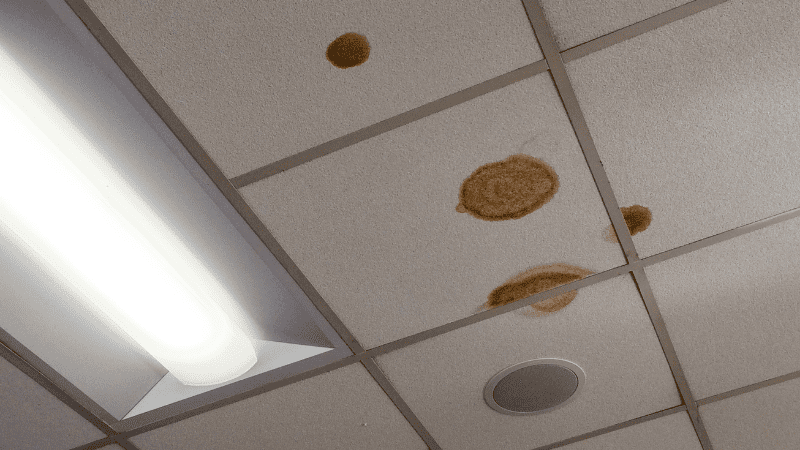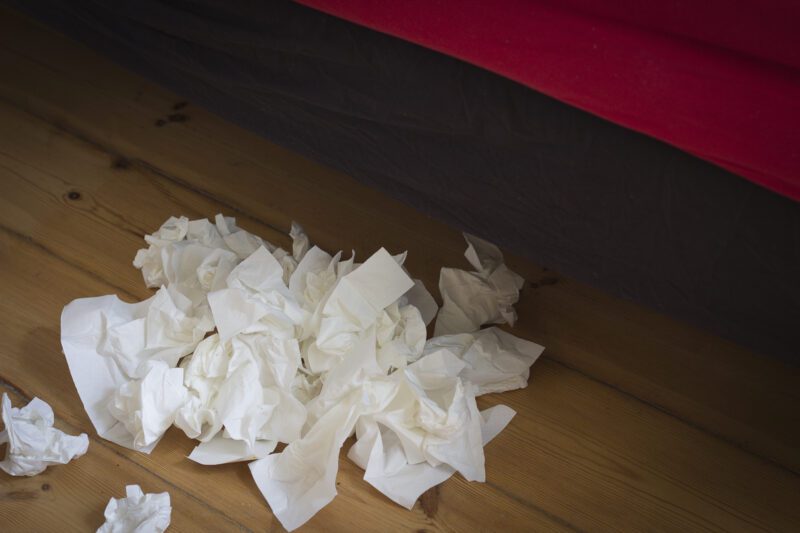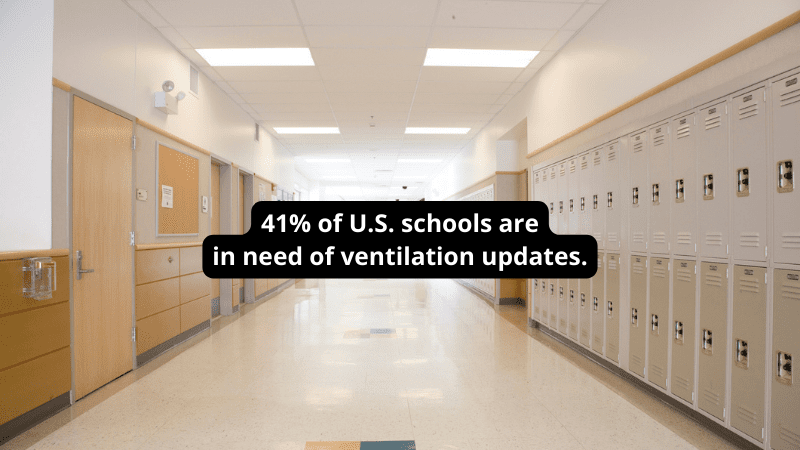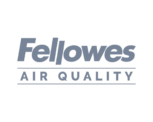Maryellen, a special education teacher, had a dry cough that never seemed to go away. The doctor said it was seasonal allergies, and it did always seem to get better over long breaks like winter and summer vacation. It wasn’t until another teacher in her building developed adult-onset asthma that they began to suspect their school’s air quality might be the culprit.
In 2020, a study from the U.S. Government Accountability Office found that 41% of schools are in need of updates to heating, cooling, or ventilation systems, proving there is an air quality problem in U.S. schools. Additionally, studies have found that poor indoor air quality in schools can lead to increased student absences as well as decreasing performance on standardized testing.
In March of 2021, Congress allocated $122 billion in funding to help districts make improvements to safely reopen following the pandemic. However, only 33.9% of schools reported making updates to ventilation and HVAC systems in a survey from December 2022. So, where did this funding go and why aren’t schools investing in the health and safety of their buildings?
Are You Teaching in a Sick School Building?
A whopping 97% of teachers feel that clean indoor air helps them perform at their best, and that schools have a responsibility to provide clean air in the classroom. But most of them feel that schools aren’t living up to their end of the bargain.
Here are the warning signs that might mean you’re teaching in a sick building, plus tips and solutions to combat these issues.
Sign #1: Teachers Frequently Sick

Do teachers really have more robust immune systems than people in other professions? This could just be a commonly held myth. With this in mind, if you or your colleagues seem to be catching every cold, flu, or other sniffle your students are passing around, it might be an indicator that the air quality in your building is at least partially responsible.
Take Action: In 2023, We Are Teachers partnered with Fellowes to survey nearly 2,700 educators and school staff on air quality. Nearly all of them (96%) saw a direct connection between air quality and student and teacher performance. But only 26% felt their own school’s air quality was good or excellent. Find more results from our survey here, and share them with your school leaders too.
Sign #2: Dry, Irritating Coughs

A persistent dry cough even though you drink water throughout the day? Dry, irritated eyes, sinuses, and throats are common in buildings where air quality isn’t up to par. Sometimes the problem is due to air not circulating enough in buildings that are well insulated against outside temperatures. Other times, however, these symptoms can be signs of bigger issues.
Take Action: It’s important to make sure the air we breathe at school is clean and well filtered. Forty percent of teachers say their schools have no air purifiers or purification systems at all. A classroom air purifier unit like the Fellowes AeraMax Pro can make a big difference, filtering out up to 99.9% of harmful particulates.
Sign #3: Leaks and Stained Ceiling Tiles

Does your classroom ceiling look like this? Or does everyone in the building know that one water fountain leaks so much they just put a plastic bag around the pipes? Buildings that have moisture problems can also have mold problems. And mold can lead to a whole host of health issues. Nasal congestion, sinus infections, fevers, coughs, and chills are just a few.
Take Action: A professional air quality assessment is always a smart choice. It might be just the thing to convince administration of these issues by presenting concrete analytics.
Sign #4: Worsening Allergy and Asthma Symptoms

Years of dust, mold, and pollen could be building up inside your school if the air quality and ventilation are poor. This can lead to increased signs of allergy symptoms that don’t subside, including itchy eyes, nose, or throat. Additionally, those suffering from asthma may see worse or increasing symptoms from these irritants in the air. Asthma is already a leading healthy concern for students, and poor air quality is a contributing factor.
Take Action: Share information about the effects of asthma and allergies in K-12 education with your school board and administrators. For instance, 1 in 10 children in the United States have asthma, and nearly 26% of adults suffer from seasonal allergies.
Sign #5: Wildly Fluctuating Temperatures

Does your classroom only seem to have two temperatures, way too hot or way too cold? If so, your building has an air quality problem. In fact, thermal control is a hugely important component in creating positive learning environments. Students struggle to learn in classrooms that are too cold or too hot. Adjusting classroom temperatures to improve thermal comfort can boost student performance by keeping them comfortable.
Take Action: The 2024 White House Toolkit for Sustainable and Healthy Schools notes that 36,000 public schools have inadequate HVAC systems to handle their needs. Even systems that worked in the past might not be good enough now. As average temperatures climb due to climate change, the report estimates that 13,700 schools that didn’t need AC in 1970 will require it by 2025. If your school is one of them, or you feel like your classroom temperature is never quite right, raise the issue with your administrators or school board.
Sign #6: Little Furry Visitors

Mice are common pests in many schools and classrooms. From full storage closets, where they can hide and burrow, to cabinets full of snacks, mice can make a pretty good life for themselves in a school building. And as gross as it sounds, this means particles of their droppings, saliva, and fur can be in the air, waiting to cause problems. According to the EPA, rodents can spread more than 35 separate diseases. This can happen by direct contact with the animal or by coming into contact with their urine, feces, or saliva. While getting vermin out of the building is not an air quality issue, their droppings and dander can release particulates into the air.
Take Action: The EPA mandates integrated pest management (IPM) at all schools. Ask about your school’s IPM plan if you’re seeing frequent signs of pests like rodents or insects, and learn more about the EPA’s requirements and recommendations.
Sign #7: Headaches on Schedule

For some of us, headaches are unfortunately a common part of the day. If, however, you start to notice that you develop a headache before noon each school day but not during other stressful situations, the air quality in your classroom or building might be responsible.
Take Action: If you’re a frequent headache sufferer, try tracking where and when yours start. You may notice a pattern that’s directly related to the amount of time you spend in your school building or classroom. If so, it’s a sign to let your administration know about your concerns.
Sign #8: Mystery Symptoms

Headaches, nausea, dizziness, irritability, itchy eyes, respiratory illnesses, muscle tension, and other physical symptoms can have many causes. But working in a “sick building” might explain why you’re having those symptoms when the other causes don’t seem to apply anymore. The concept of “sick building syndrome (SBS)” has been around since the 1970s when doctors started seeing patients with similar symptoms who all worked in the same buildings.
Take Action: Learn more about SBS in this report from the EPA. Consider whether multiple teachers and students in your building have mystery symptoms that seem to improve during weekends or long school breaks. You might even conduct a voluntary survey of staff and families to learn more about the prevalence of these symptoms.
Sign #9: Increase in Student Absences Year-Round

It’s no surprise that absences tick up at certain times of year. It makes sense to see that during the peak of cold and flu season (usually December to February), but if your school is seeing a lot of absences that don’t seem related to this year’s outbreaks, it might be worth investigating.
Take Action: Take a closer look at your school’s attendance numbers over recent years. How do this year’s numbers compare to those from this time last year, or the years before that? If you’re seeing a steady increase, school air quality could be the culprit.
Sign #10: Significant Decrease in Test Scores

Teachers spend so much time prepping students to do well on standardized tests. We teach test-taking strategies, give practice tests, and so much more. But it turns out that one way to help students perform better on standardized tests (and in the classroom in general) is to improve the indoor air quality (IAQ). Researchers have found notable decreases in student performance when the air quality is poor. The effect is even worse for asthmatic students, who may suffer as much as a 10% drop in scores when ozone levels are high.
Take Action: Pay special attention to the air quality in testing spaces. Opening windows when possible can be a great way to circulate new air into the space. Evaluate the indoor air quality in these rooms in advance to determine what you can do to improve the air … and test scores too.

